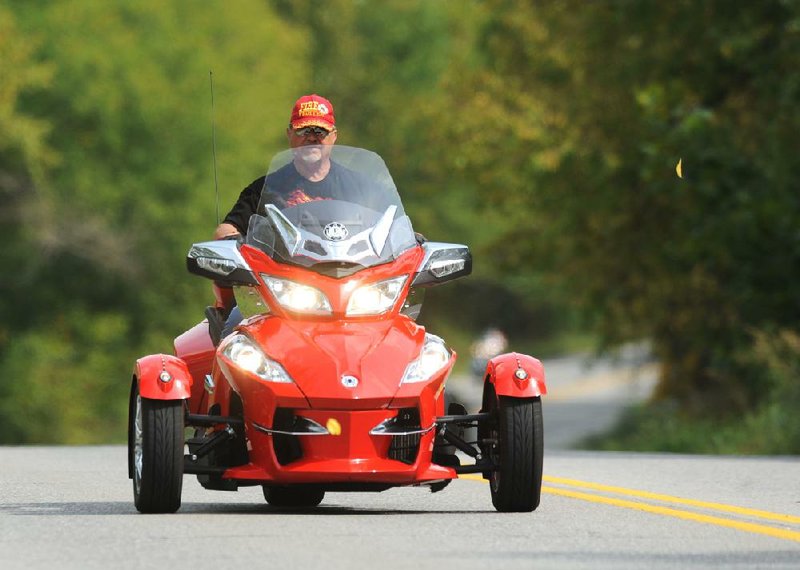MOUNT AIRY, N.C. — In his nearly 50 years as an avid motorcyclist, Grady Howard has roared down the tobacco roads of North Carolina and through the mountains of old Kentucky, all with his wife, Barbara, tucked behind him. But with a balky left leg and myriad other maladies, he knew the only way to stay wild was to add a wheel.
“I told my wife it was either trike it or park it,” said Howard, 74, wearing a cowboy hat and a bright-yellow safety shirt. “And she said, ‘Trike it.’”
Howard is one of a legion of aging bikers — suffering from aching joints and slowing reflexes — who have abandoned their traditional two-wheel motorcycles in favor of three-wheelers, the super-steady and seemingly safer machines commonly known as trikes. Equal parts Easy Rider and easy chair, the trikes have grown in popularity in recent years, expanding from a do-it-yourself niche to a potentially lucrative market for major manufacturers.
Industry experts say the sale of tens of thousands of trikes, whose sticker prices can rival an upscale sedan’s — a new three-wheeled Harley starts at $30,999 — has helped buoy a slumping industry and kept a generation of born-to-run riders on the roads.
“The baby boomers are getting older, man,” said Steve Stirewalt, a lifelong rider and motorcycle dealer known as Fat Daddy by his friends. “People riding all their lives don’t want to stop just because of bad knees, or bad eyes, or diabetes or something. They want to keep rocking.”
Stirewalt, who is 63 and is helped along by a hearing aid, was polishing his threewheeler — a chrome-onchrome chopper with a fake alligator skin seat — at the National East Coast Trike-In, which drew hundreds of trike owners and enthusiasts to Mount Airy over Labor Day weekend.
Three-wheelers are even a common sight at Harleyhappy events like the giant motorcycle rally in Sturgis, S.D., that draws hundreds of thousands of people to the Black Hills every August, including Monte Hochhalter, a 68-year-old truck driver from Longmont, Colo., who decided to switch to three wheels after some pressure at home.
“My equilibrium isn’t so good anymore,” Hochhalter said. “My wife wouldn’t ride with me.”
Hochhalter was riding a converted 2006 Harley, which cost him $18,000. But the company’s 2013 trike can go for almost twice that, complete with cruise control and a good set of high beams (perfect for older eyes, of course). It also comes with an ample trunk, something Tim Buche, the president of the Motorcycle Industry Council, a trade group, said was important to baby boomers — who make up a third of motorcycle owners.
“Boomers travel,” he said. “And they like to take all their stuff.”
A collection of independent companies has long offered kits to convert twowheel bikes made by major manufacturers. But in 2008, Harley-Davidson — the industry leader in large touring bikes — announced that it would enter the market with the Tri Glide, working with a smaller company called Lehman Trikes. (In 2010, Harley moved production in-house.)
The Tri Glide is now a consistent top-10 seller in several demographic groups, said Scott Habegger, the company’s director of product planning, including the company’s core customers: white men older than 35.
But the three-wheelers are tapping into another market: women, including those who may not have been comfortable handling a touring bike, which can weigh nearly 1,000 pounds, or were just tired of being relegated to the role of passenger.
“I don’t like riding behind him when I drive just as well,” said Melinda Metheney, 52, gesturing to her husband, Paul.
She bought her new threewheeler — a Canadian-built Can-Am Spyder, with two wheels in the front and one in the rear — in February.
“I’ve never not beat a car or a motorcycle at a light,” she said.
Information for this article was contributed from Sturgis, S.D., by Bob Mericer.
Front Section, Pages 2 on 09/30/2012

